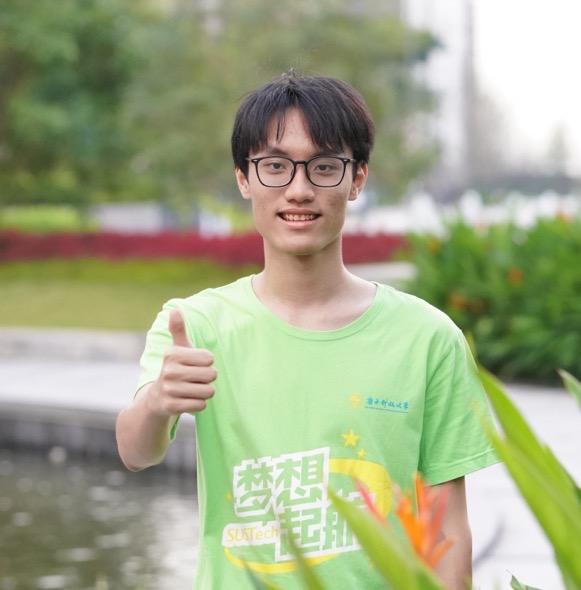
Abstract
We present Haibin, a fourth-year undergraduate student in Computer Science at Southern University of Science and Technology (SUSTech). He is currently engaged in research in Parallel Computing, Machine Learning Systems, and GPU Computing at the SUSTech HPC Lab.
Sept 2022 – Present, Southern University of Science and Technology, Undergraduate in Computer Science
-
GPA: 3.70/4.0
-
Interest
Introduction
-
What would happen if you use
gdbto observe anothergdb? -
How did LLVM implement
OpenMP? -
In context switches, we have
PCB. So why do we still need to store information in the user stack and kernel stack?
My research motivation stems from a deep curiosity for these “stupid” problems. I find profound joy in discovering and dissecting the hidden mechanisms behind computer systems.
“Live, travel, adventure, bless, and don’t be worry.”
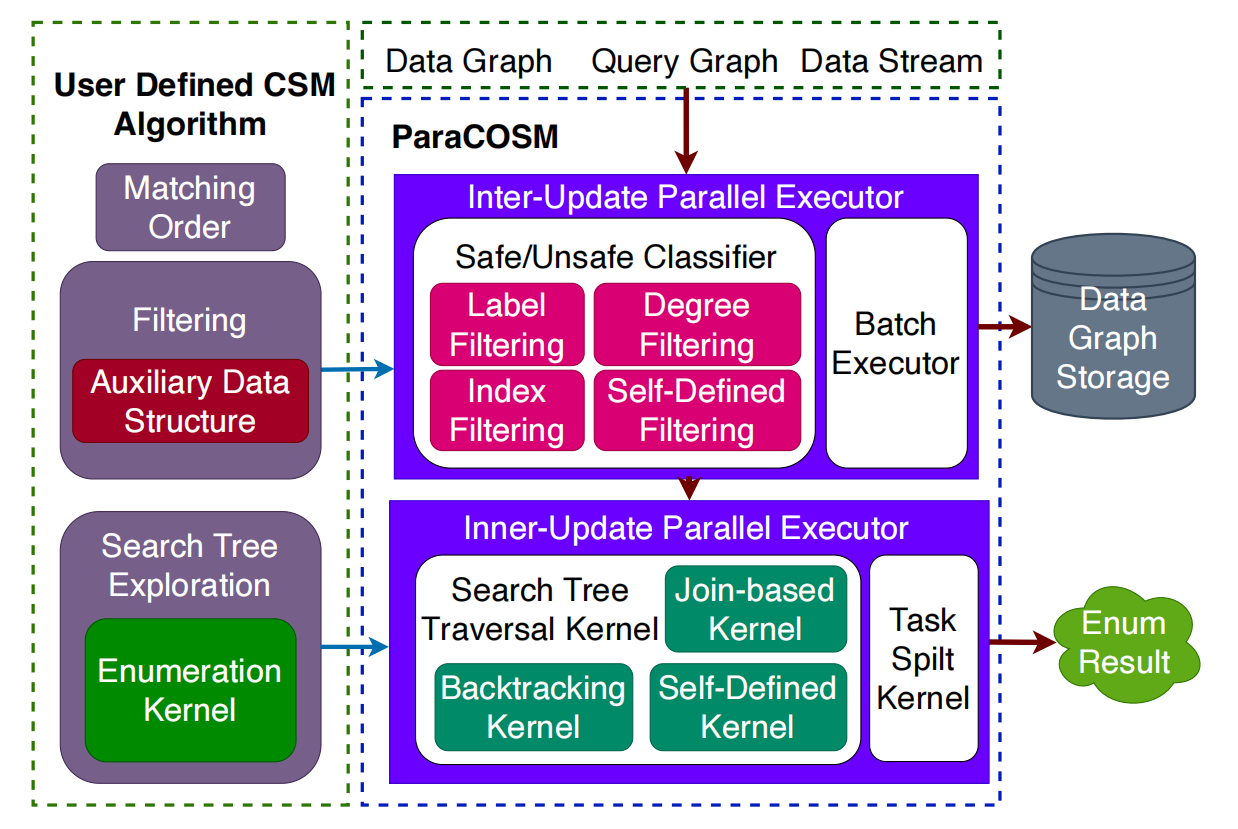
ParaCOSM: A Parallel Framework for Continuous Subgraph Matching
Haibin Lai, Sicheng Zhou, Site Fan, Zhuozhao Li
-
In this paper, we present ParaCOSM (Parallel COntinuous Subgraph Matching), an efficient parallel framework for existing Continuous Subgraph Matching algorithms on CPU. ParaCOSM achieves $1.2\times$ to $30.2\times$ speedups across datasets and up to two orders of magnitude faster execution, with up to 71% higher success rates on large query graph .
Haibin’s Main Design
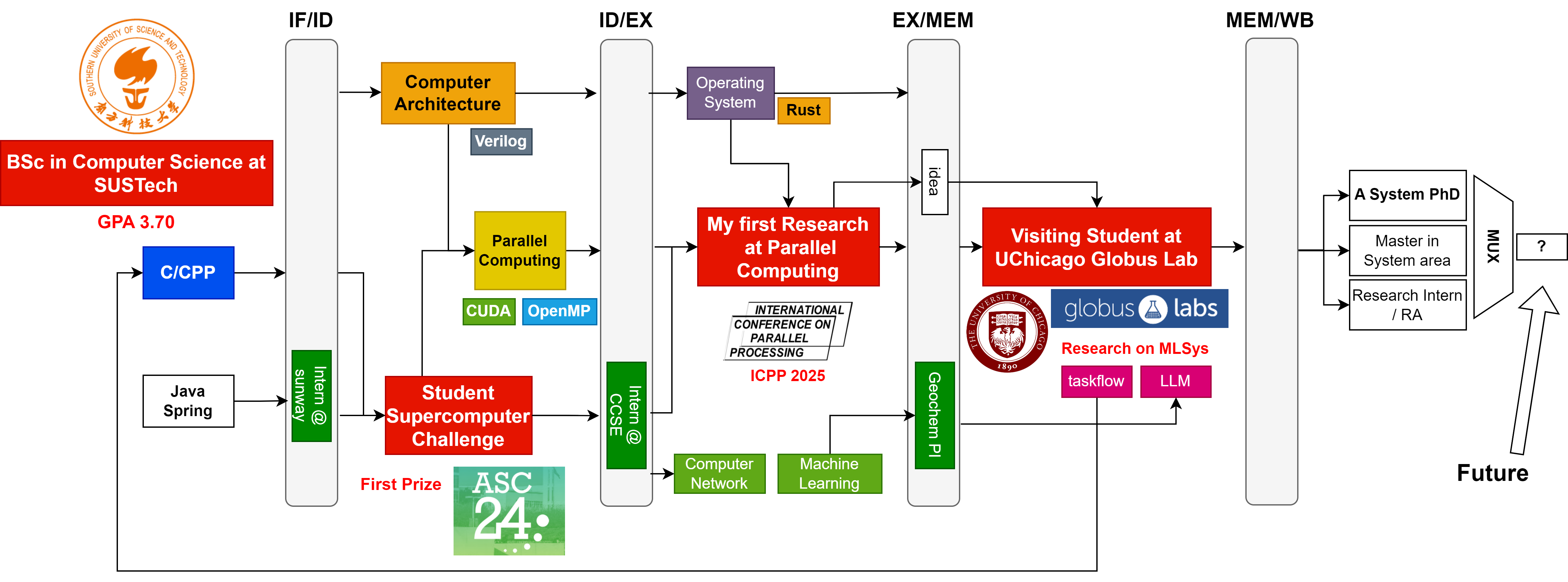
As shown in Figure 2, my academic architecture integrates two research applications and multiple project-level modules. In this architecture, I am fueled by a principle I live and work by:
“The only people for me are the mad ones, the ones who are mad to live, mad to talk, mad to be saved, desirous of everything at the same time, the ones who never yawn or say a commonplace thing, but burn, burn, burn like fabulous yellow roman candles exploding like spiders across the stars and in the middle you see the blue centerlight pop and everybody goes ‘Awww!”
— Jack Kerouac
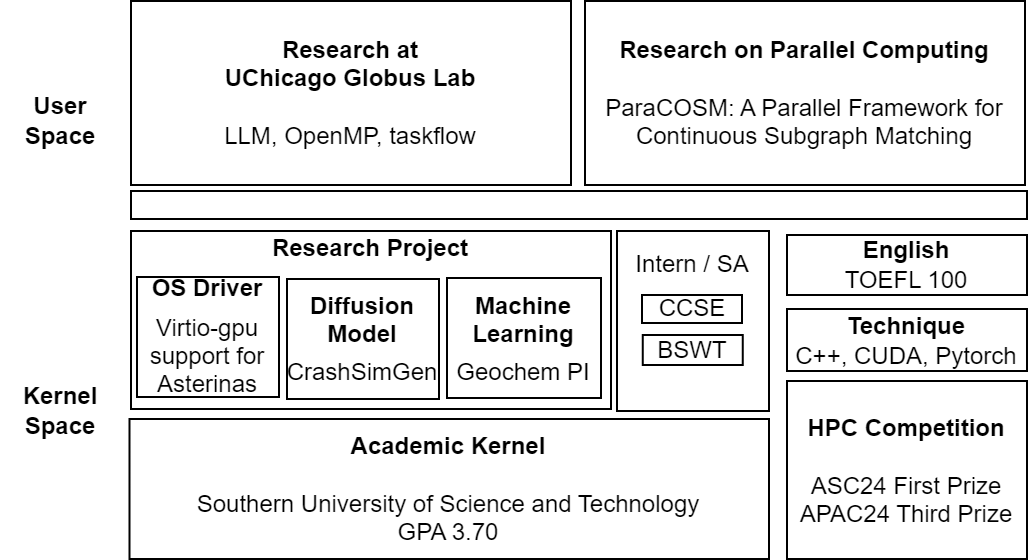
Education
Sept 2022 – Present, Southern University of Science and Technology, Undergraduate in Computer Science
-
GPA: 3.70/4.0
-
Coursework: Operating System(H) 96, Machine Learning(H) 96
Research Project
-
Aug 2024 - Mar 2025, Geochemistrypi, China. Online Intern, Zhejiang University DataEarth Lab.
-
Dec 2024 - Jan 2025, Viritio-gpu support for Asterinas OS. Implemented virtio-gpu driver in Asterinas Operating System on Qemu using Rust. The driver works with page buffer scheme and allow user library like mesa communicates with qemu virtio using specfic syscall.
- Nov 2024 - Jan 2025, CrashSimGen: Generating Safety-Critical Scenarios with Diffusion Models. CrashSimGen is a project that generates dangerous road scenarios using diffusion models for autonomous driving risk assessment. Tools Used: Pytorch, Tensorflow.
Internships
-
March 2025 - Present: Visiting Student, UChicago Globus Lab. Research on High Performance Implementation of OpenMP for many socket machines.
-
Feb 2024 – Aug 2024: Student Assistant, SUSTech Center for Computational Science and Engineering. Participated in the operation and maintenance of SUSTech Qiming and Taiyi Supercomputer.
-
Aug 2023 - Sep 2023: Intern , Beijing Sunway World Technology Co., Ltd.
HPC Awards
- Dec 2024: 7th APAC HPC-AI Student Competition ; Third Prize ; Leader of HPC Team, using HPC-X communication library to accerlerate Hoomd-blue HPC software;
- Apr 2024: ASC Student Supercomputer Challenge; First Prize ; LINPACK benchmark and parallel optimization of materials science calculations
Related Works
Honors
- Nov 2024, 2024 Outstanding Student Award
- Jan 2024, Contemporary Undergraduate Mathematical Contest in Modeling (CUMCM)
- Nov 2023, 2023 Outstanding Student Award
- Sep 2022, 2022 President’s Special Scholarship
English Skills
- Oct 2024, TOEFL. Score: 100/120; speaking 22, listening 26, reading 30, writing 22
- Jun 2024, CET6: 649/710
- Jun 2023, CET4: 604/710
- Jul 2023, Georgia Institute of Technology ASP Program . Participated in summer courses at Georgia Tech, enhancing international communication skills and gaining insights into American culture.
Techniques
Languages: C++, C, CUDA, Java, python, Rust, SQL
PostgreSQL, Docker, Linux
Experiment
Time Distribution
To understand how time is distributed throughout a research lifecycle, Haibin categorizes research into six key stages:
Planning (2 months), Finding Failures (1 month), Main Design (2 months), Validation (3 months), Pruning and Boosting (2 months), and Writing Papers (1 month).
For each stage, two representative weeks were randomly sampled, and detailed work activity logs were extracted from Toggl Track as figure 3 shows. Class homework and unrelated tasks were excluded.
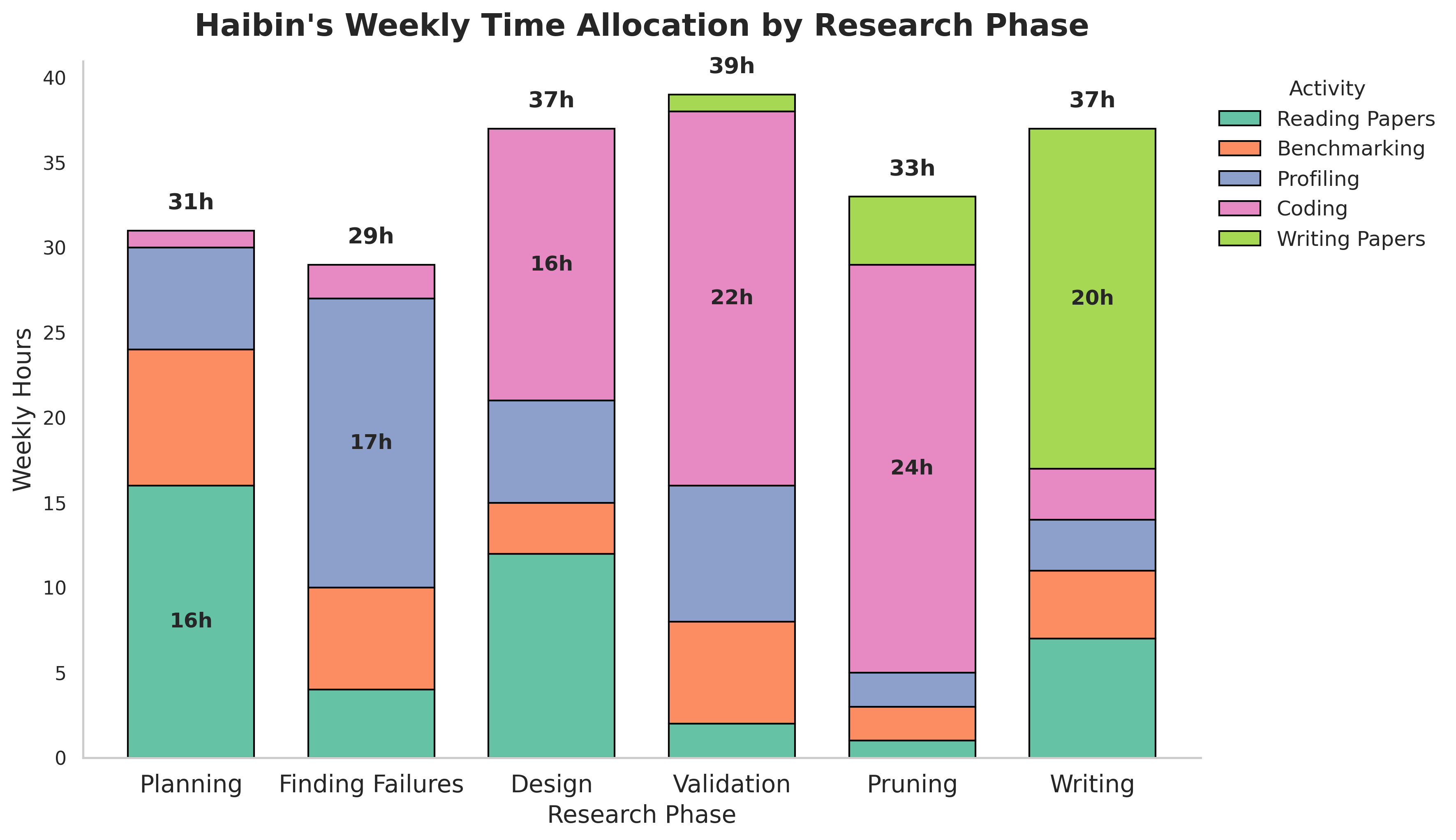
Haibin’s research process shows clear stage separation and role reallocation: early stages are exploration-heavy (reading, benchmarking), middle stages are dominated by implementation and validation, and final stages shift toward refinement and storytelling.
Working Efficiency
To better understand when Haibin achieves peak productivity, we conducted a self-tracking experiment across several real-world conditions. The measured efficiency is normalized to solo coding (100%) as baseline. The results are shown in Figure 4.
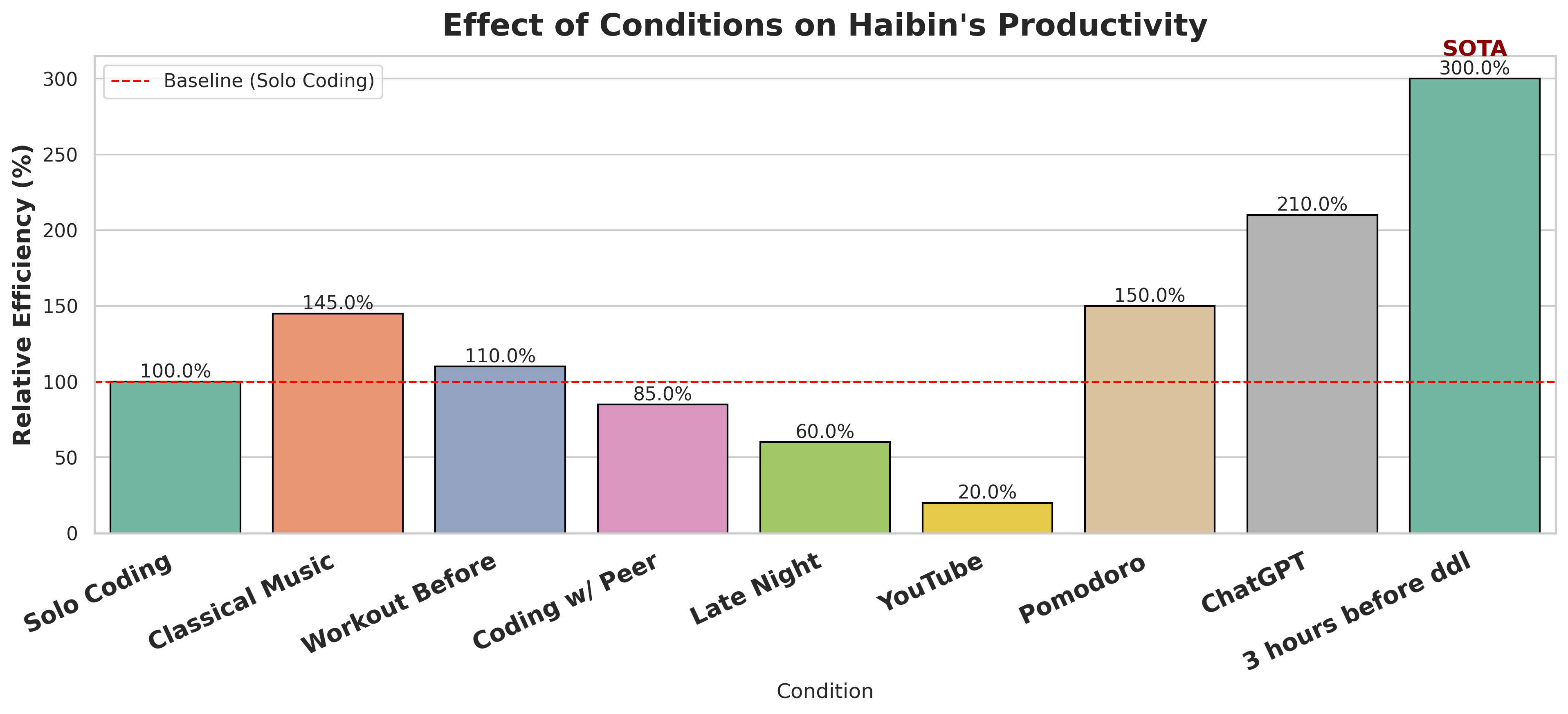
Haibin’s peak productivity occurred “3 hours before deadline” with a 300% efficiency boost. Also, the Pomodoro technique resulted in 150% efficiency. And Classical Music yielded 145% efficiency for coding and experimenting.
Coping Resilience Strategies
As shown in Figure 5, I tracked the relative efficiency (compared to baseline solo coding) and mood recovery (self-rated on a 1–10 scale) for each method.
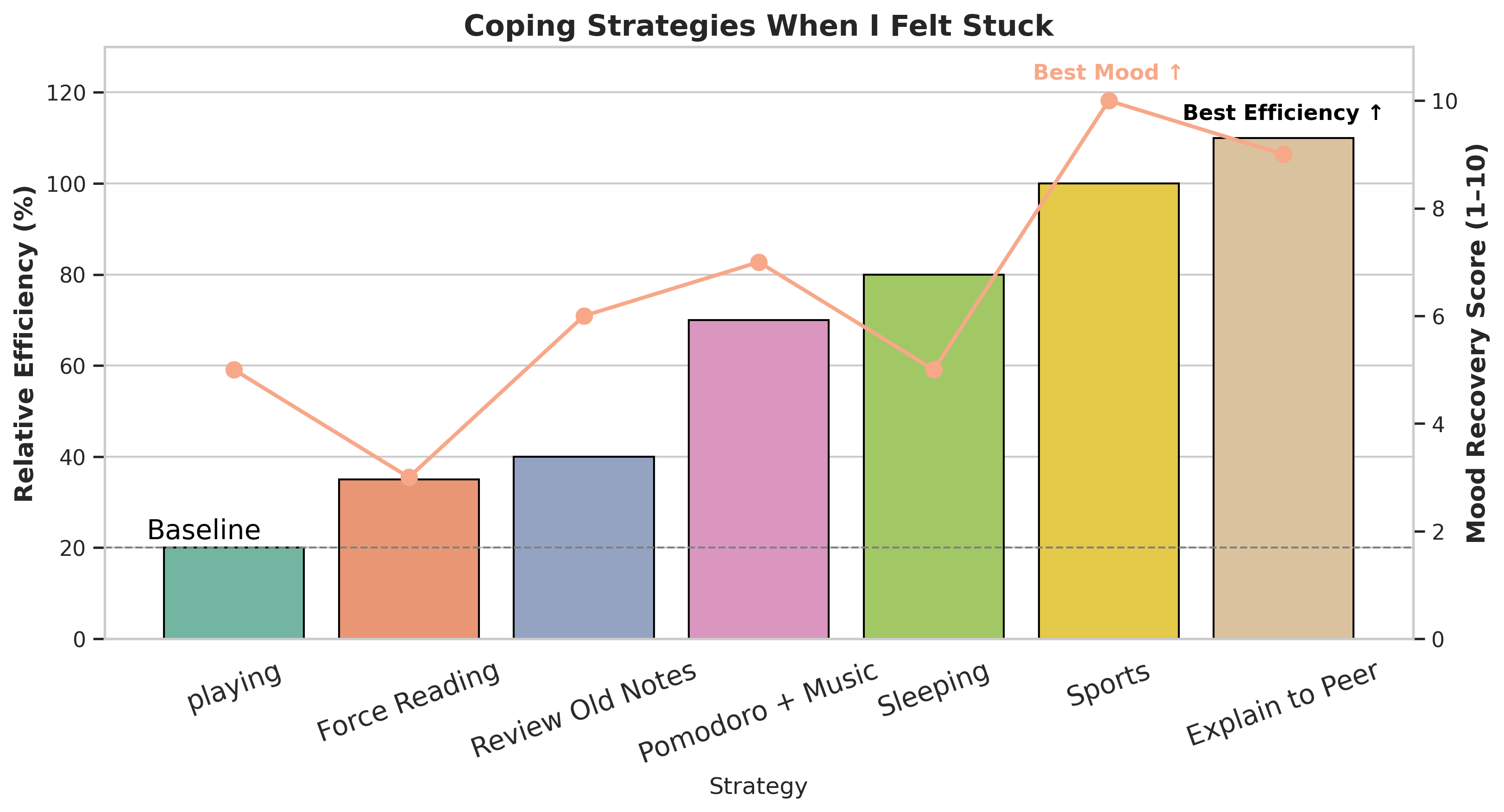
Simple techniques such as sports and structured rest (e.g., Pomodoro + music) proved helpful, with explaining ideas to a peer emerging as the most effective strategy—boosting productivity to 110% and offering high emotional relief.
This experiment helped me realize that productivity is not just about time, but also mindset, environment, and support. Apparently, talking to people > talking to myself.
Contact
Although Haibin is not open-sourced with Apache Licence 2.0, you can reach him at 12211612@mail.sustech.edu.cn .
